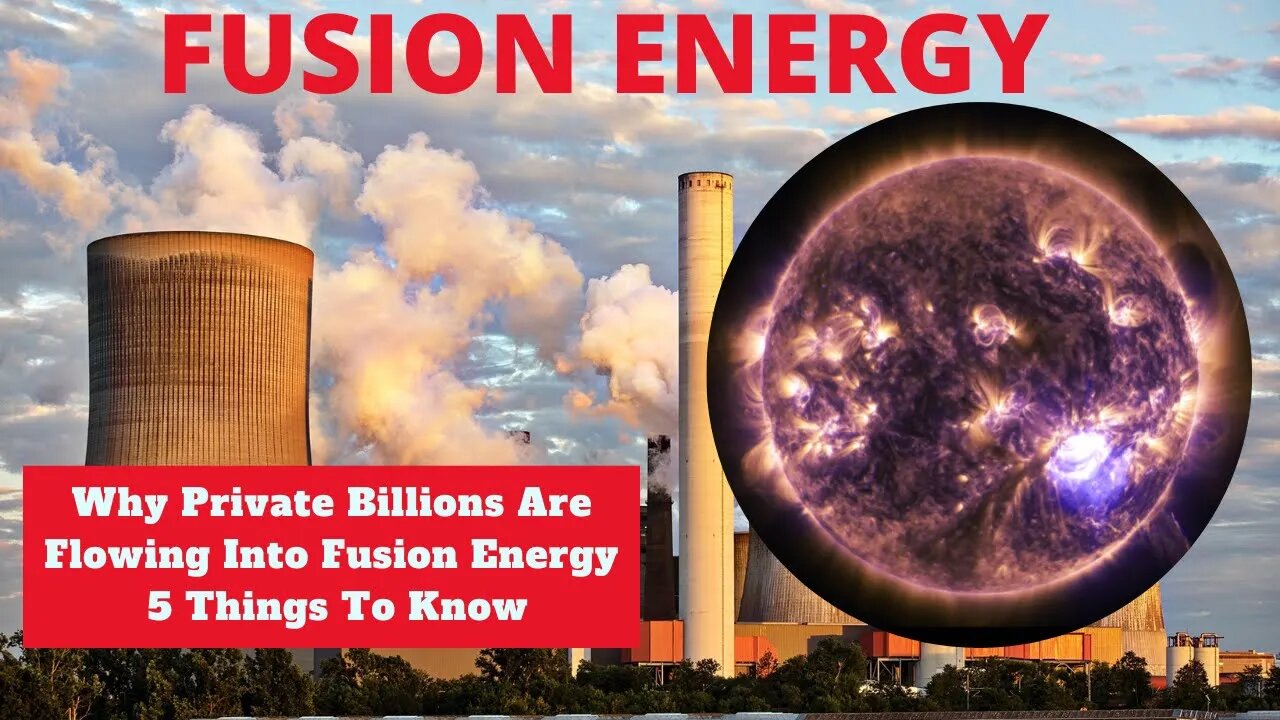Premium Only Content

Why Private Billions Are Flowing Into Fusion Energy 5 Things You Should Know Future Technology News
Why Private Billions Are Flowing Into Fusion Energy 5 Things You Should Know Future Technology News
#fusionenergy #futuretechnology #financenews
0:01 Why Private Billions Are Flowing Into Fusion
Why Private Billions Are Flowing Into Fusion Energy 5 Things To Know
The quest to harness nuclear power on an industrial scale has barely begun. Since the late 1950s, scientists have been perfecting the technology of fusing atoms to produce energy. Today, there are more than 60 commercial nuclear reactors in operation around the world.
But despite these successes, fusion energy—the process of smashing two or more atomic nuclei together to release huge amounts of energy—remains prohibitively expensive and difficult to commercialize. The main barrier is cost
The construction and maintenance costs for nuclear power plants are extremely high compared to fossil-fuel generating stations, which makes it difficult for companies and governments to justify financial outlays in advance. Fortunately, scientists are developing techniques that could reduce the upfront costs associated with fusion energy by as much as a hundredfold.
If these efforts succeed, we may one day see massive factories stretching across entire continents churning out clean electrical power at an affordable price. Let’s take a closer look at this promising field and its main challenges...
The Basics of Nuclear Fusion
The sun is the center of a massive fusion reaction that propels our solar system. The next big fusion leap will likely come from nuclear fission, the same process that powers today’s nuclear weapons. Nuclear fusion is the process by which the nuclei of atoms are joined together to form larger nuclei, releasing energy in the process.
Like the sun, a fusion reactor would contain a plasma of hydrogen atoms that are held together by nothing more than their mutual electrostatic attraction. Researchers have tried for decades to harness this natural fusion reaction, but the key to success is to heat the hydrogen plasma to temperatures hotter than the Sun.
If scientists are successful, nuclear fusion could generate “free” energy that’s almost “free” as well. It could solve the global energy crisis while simultaneously removing carbon emissions from the atmosphere. If fusion reactors were scaled up to produce massive amounts of power, they could even be used to generate “green” power in areas where it’s currently unavailable. The potential benefits of nuclear fusion are vast, and they’re only getting closer.
-
 1:36
1:36
chillhopstand
1 year agoPresident Ibrahim Traore's Vision for Burkina Faso: Message for Liberating and Developing Africa
134 -
 LIVE
LIVE
SpartakusLIVE
37 minutes agoLAST Stream Until NEXT WEEK || Going to Florida to hang out w/ a SPECIAL Gaming Buddy
111 watching -
 10:19
10:19
MattMorseTV
1 day ago $8.68 earnedTrump just went SCORCHED EARTH.
48.7K55 -
 1:36:49
1:36:49
RiftTV
2 hours agoHow Much is the Government SPYING on You and STEALING Your DATA?! | Almost Serious | Guest: Matt Kim
2.45K1 -
 1:31:26
1:31:26
Glenn Greenwald
3 hours agoAaron Maté on More Russiagate Fallout, Protests in Ukraine, and Israel's Strikes on Syria With Special Guests John Solomon, Marta Havryshko, and Joshua Landis | SYSTEM UPDATE #491
83.6K19 -
 LIVE
LIVE
Melonie Mac
3 hours agoGo Boom Live Ep 56!
361 watching -
 LIVE
LIVE
Joker Effect
26 minutes agoWHY AREN'T YOU DOING THE RUMBLE CREATOR PROGRAM...? IT BEGINS HERE. Wake up!
306 watching -
 LIVE
LIVE
Jorba4
3 hours ago🔴Live-Jorba4- Rainbow 6 Siege w/ XxXAztecWarrior and Zerrick Gaming
34 watching -
 1:33:40
1:33:40
Mally_Mouse
9 hours agoLet's Hang!! - P.O. Box & Chill - WE HIT 10,000!!!
9.98K3 -
 1:07:08
1:07:08
Playback Request Live
2 hours agoFrom Myspace to Rumble: Supmikecheck in the Creator Spotlight
2.8K1